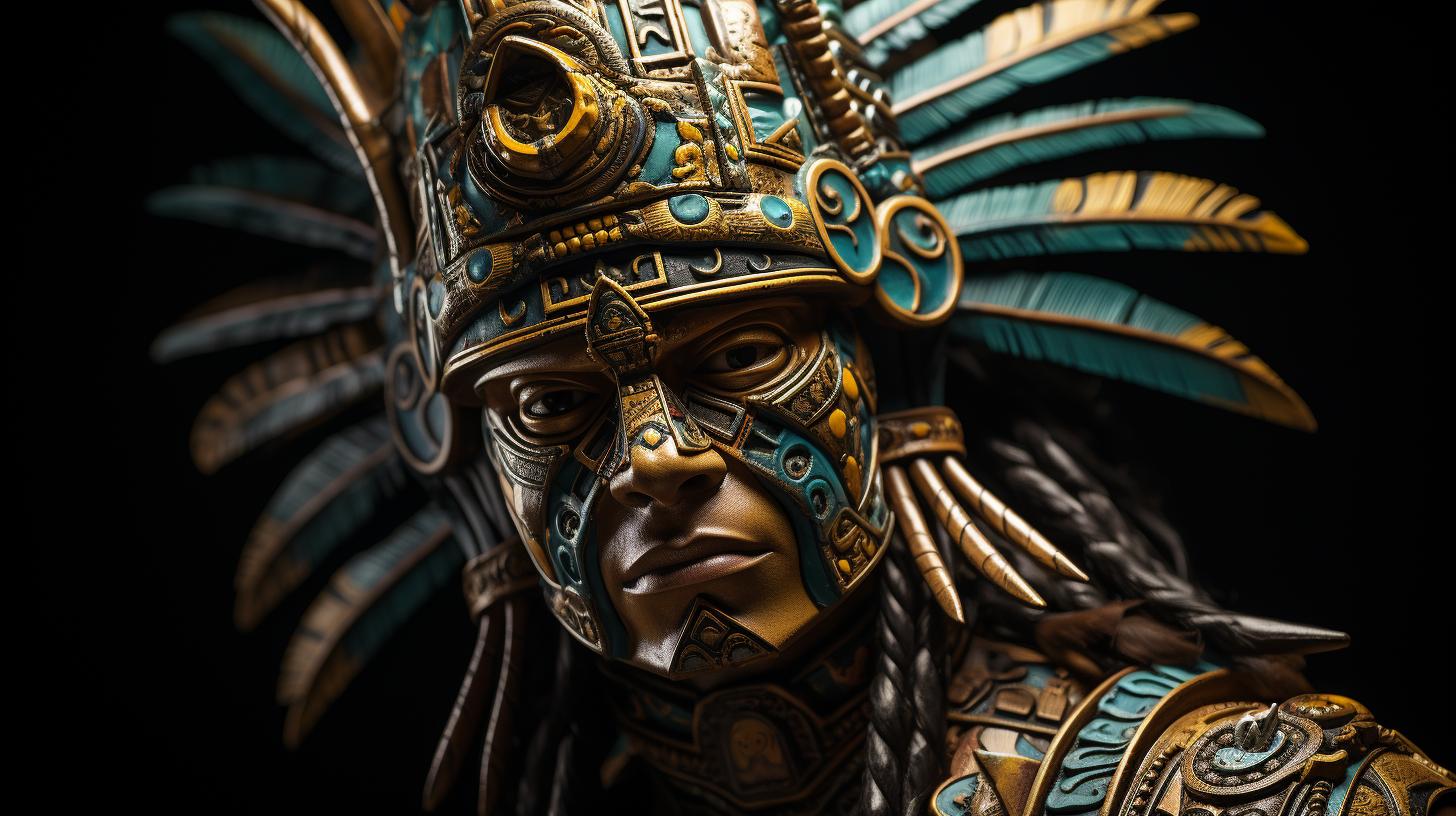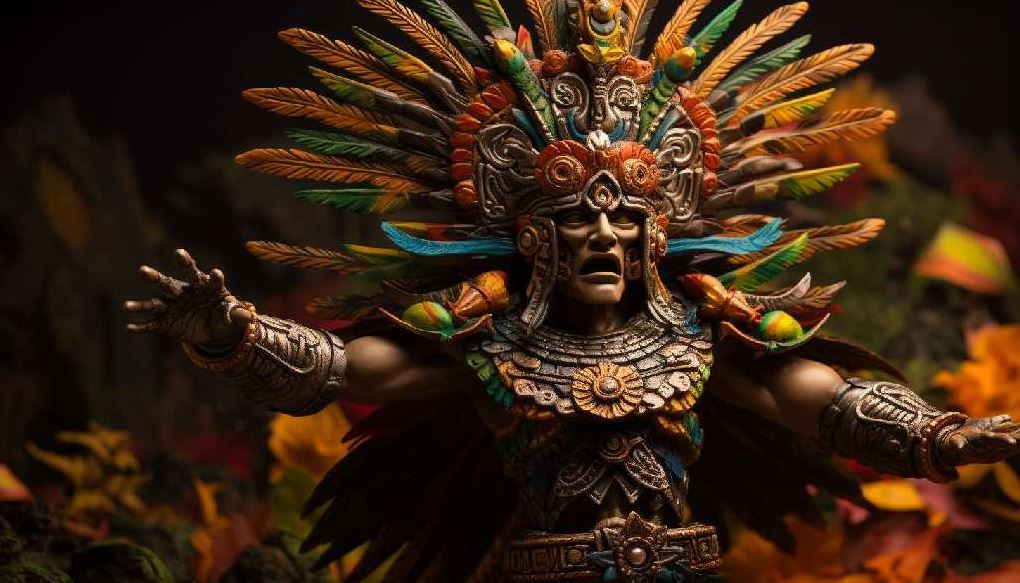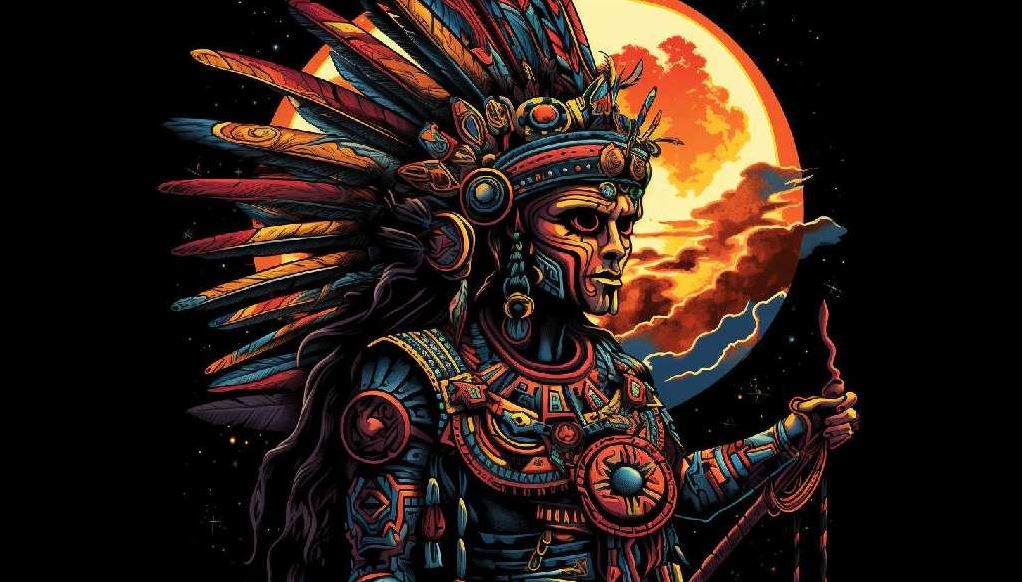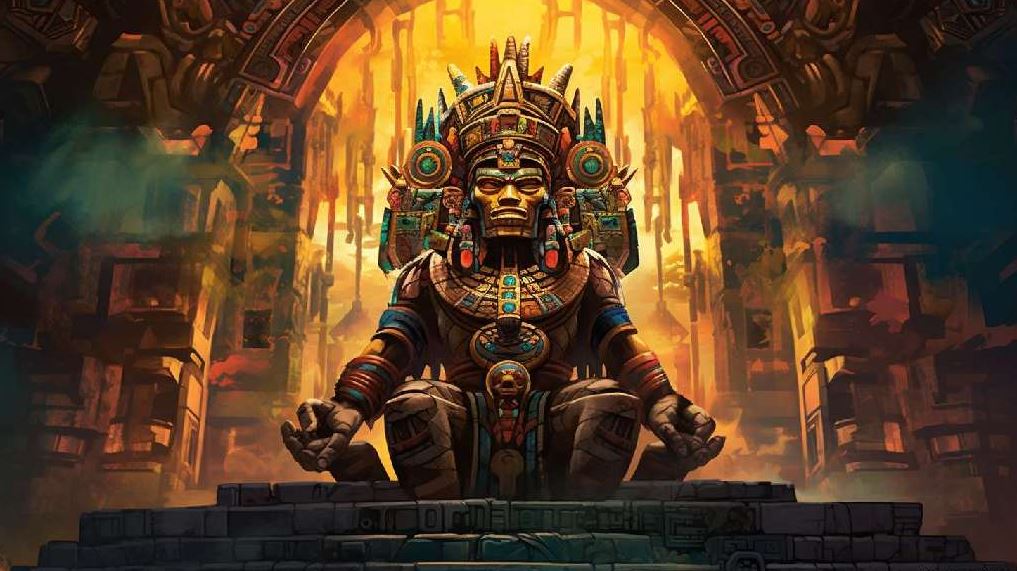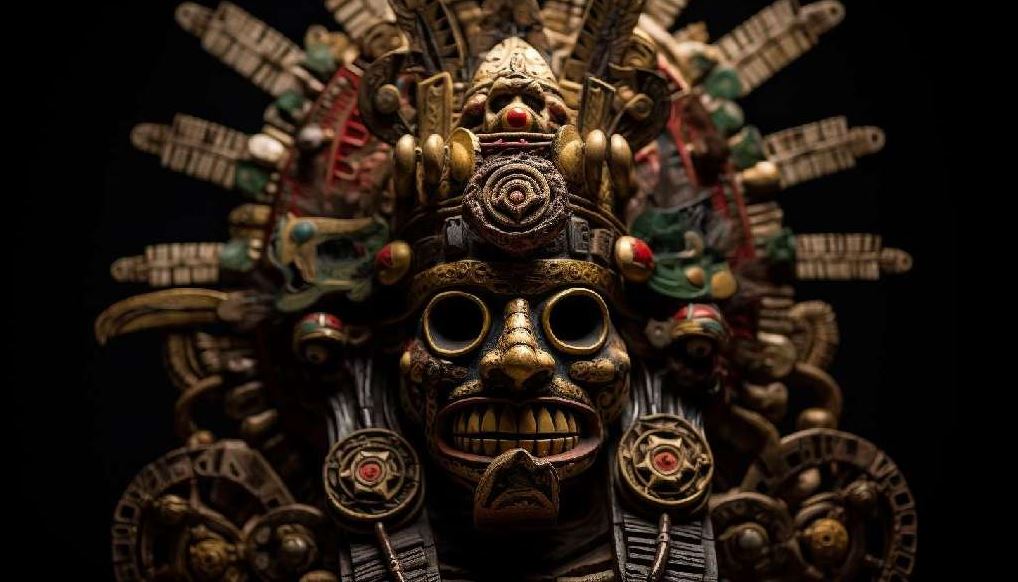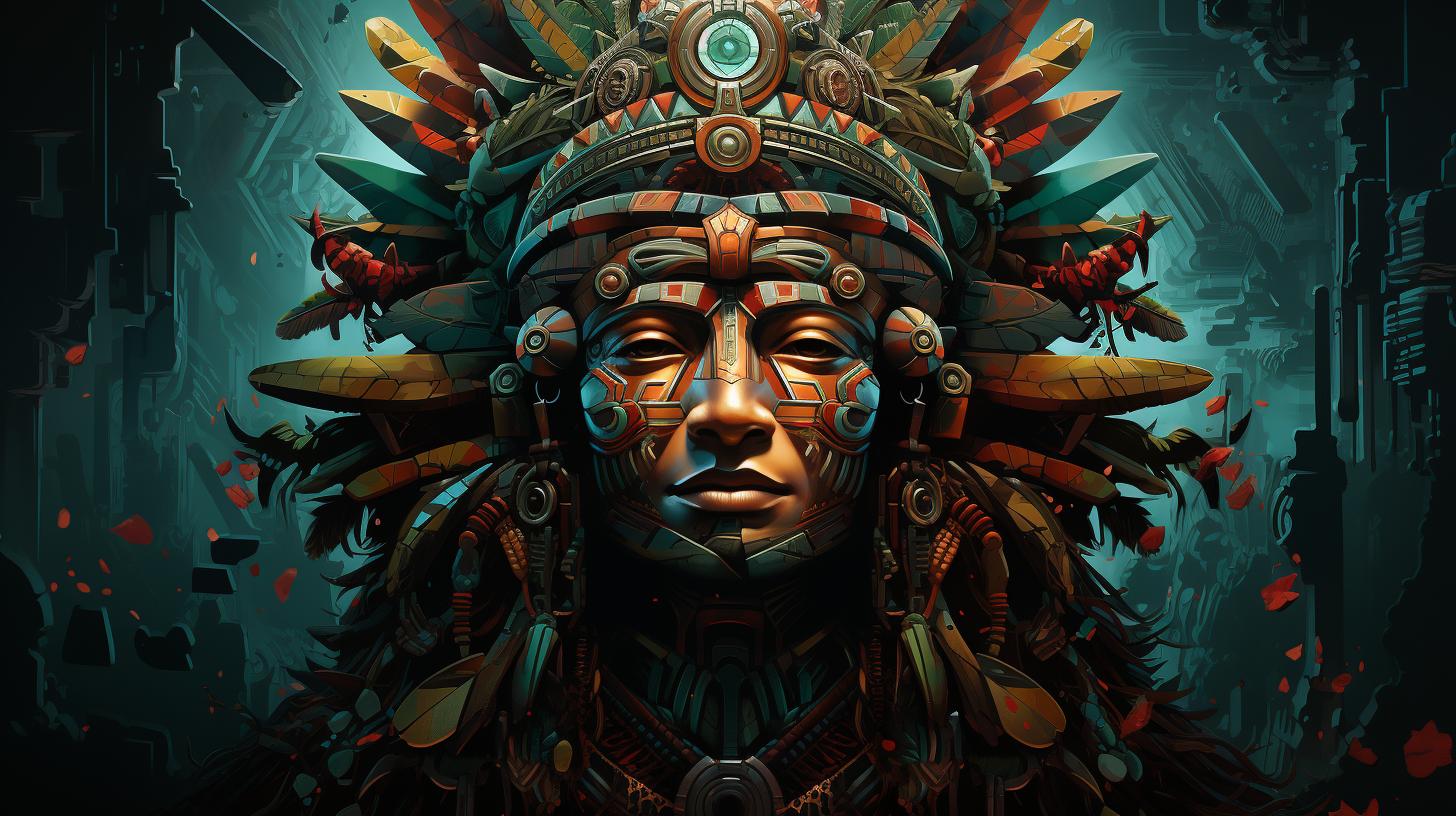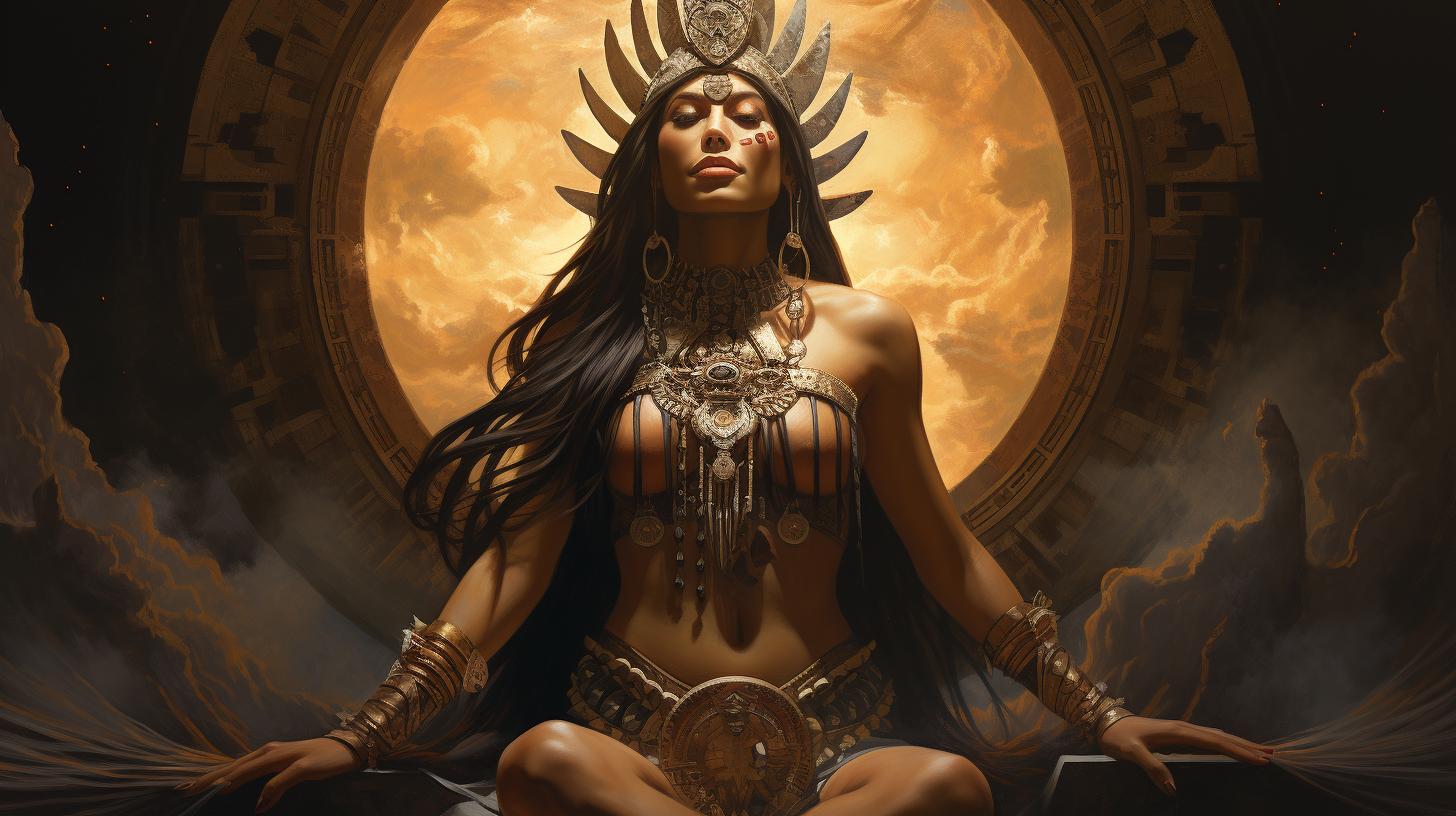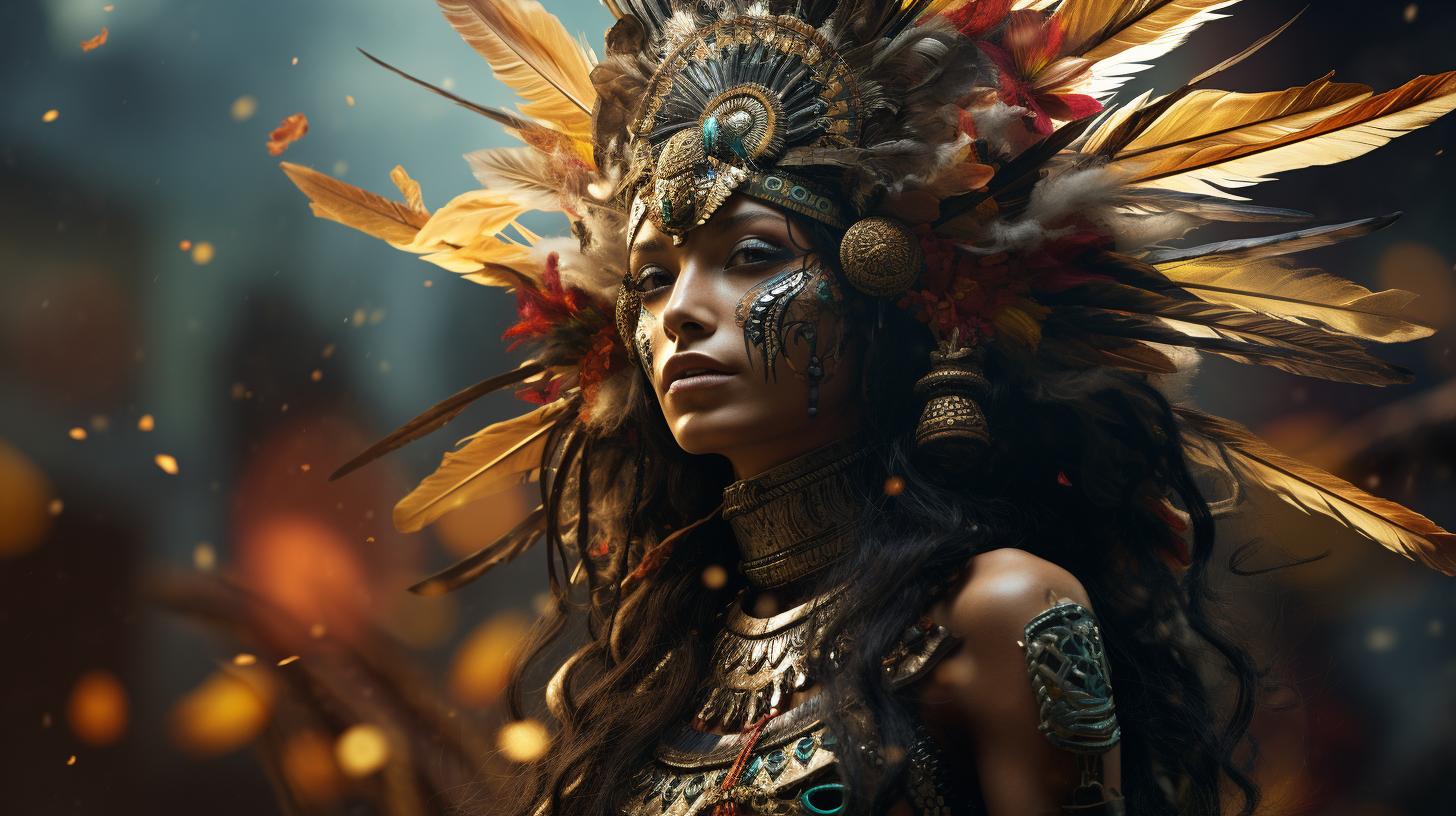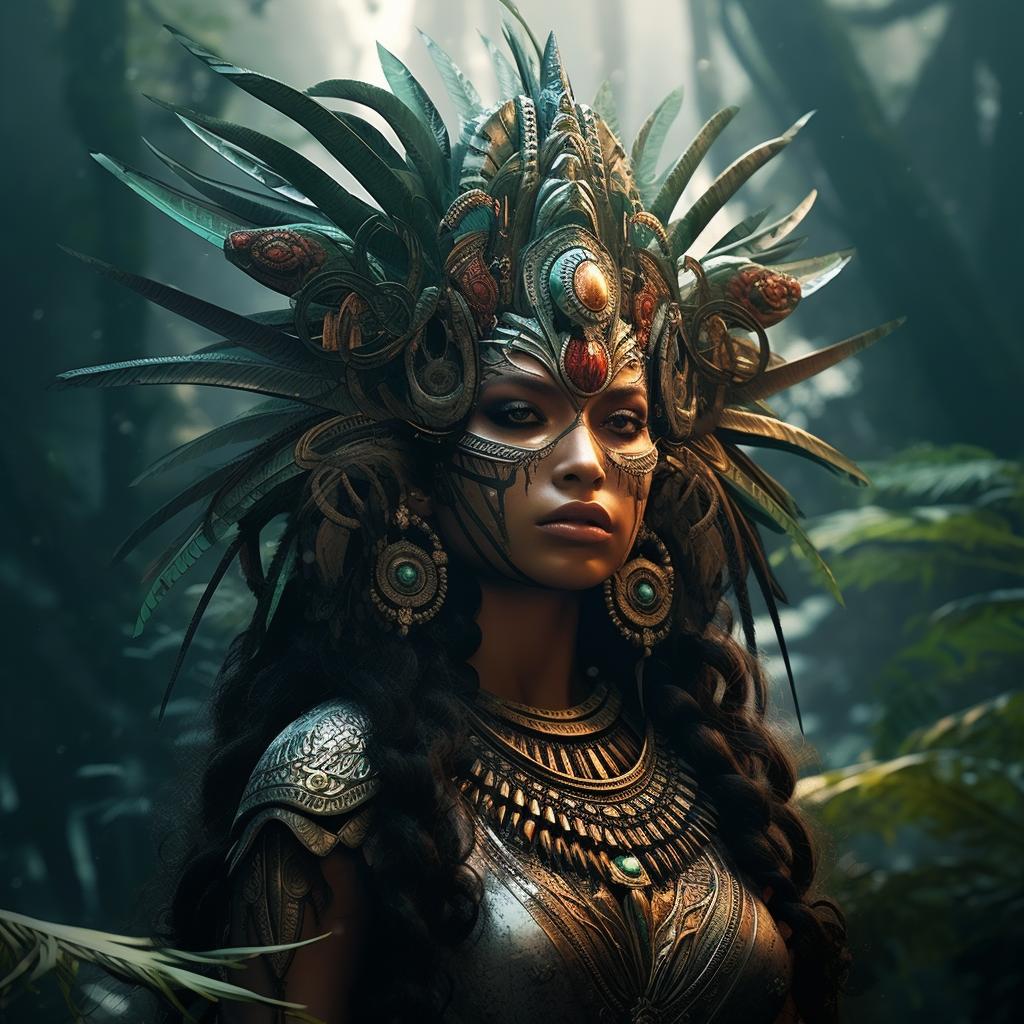Xipe Totec: Exploring the Aztec God of Renewal and Artistry
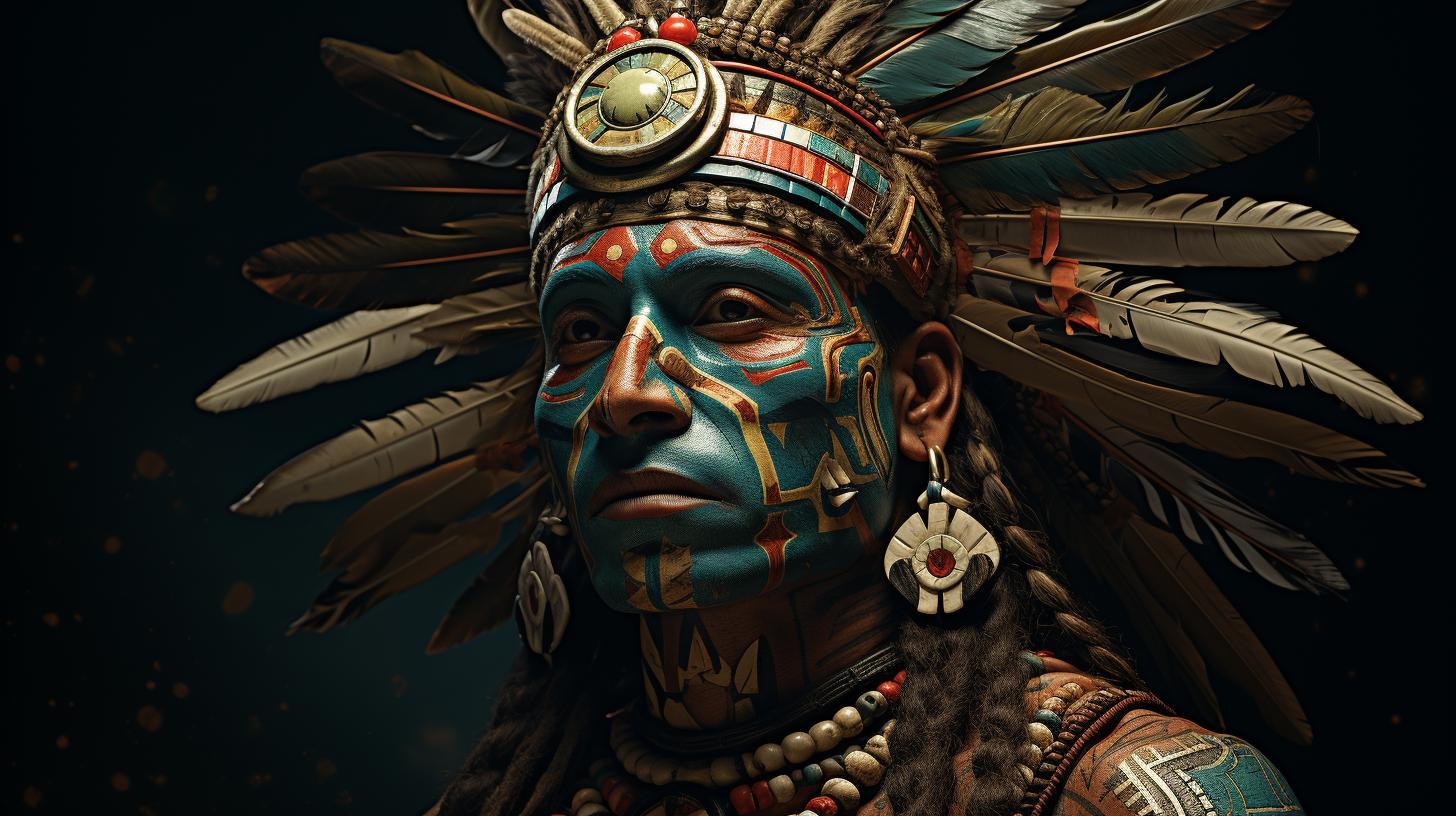
Xipe Totec is a significant deity in Aztec mythology, representing renewal and artistry. Also known as the Flayed God, Xipe Totec is associated with the shedding of old skin to reveal new growth.
In this article, we will explore the origins of Xipe Totec in Aztec mythology and its role within the Aztec pantheon. We will also delve into the symbolism, rituals, and sacrifices associated with this revered god.
Additionally, we will examine the influence of Xipe Totec in the Toltec culture and its broader significance in Mesoamerican beliefs. Stay tuned for a fascinating journey into the world of Xipe Totec!
Origins of Xipe Totec in Aztec Mythology
The origins of Xipe Totec in Aztec mythology delve into the rich and complex belief system of the Aztec people.
This fascinating deity played a crucial role in their pantheon, representing various aspects of life and spirituality.
The Aztec Pantheon and Xipe Totec’s Role
Within the vast Aztec pantheon, Xipe Totec held a unique position as the god of renewal and transformation. Often depicted adorned in the flayed skin of sacrificial victims, Xipe Totec embodied the cycle of life and death, emphasizing the continuous rejuvenation of nature and the cosmos.
Legends and Stories Surrounding Xipe Totec
Numerous legends and stories emerged around Xipe Totec, adding layers of myth and mystique to this enigmatic deity. Tales of his sacrifices and rituals shed light on the profound significance of Xipe Totec in Aztec cosmology.
These narratives unveil Xipe Totec as a powerful force invoked for fertility, agricultural abundance, and the rebirth of the natural world.
Xipe Totec: The Flayed God
Xipe Totec, known as the Flayed God, holds great significance in Aztec mythology. This section explores the symbolism and representations associated with Xipe Totec, as well as the rituals and sacrifices performed in his honor.
Symbolism and Representations of Xipe Totec
Xipe Totec symbolizes renewal and transformation. His primary representation is that of a deity wearing the flayed skin of a sacrificial victim. This gruesome depiction signifies the shedding of old skin and the emergence of new life.
He is often depicted with red and yellow colors, symbolizing blood and the sun.
Additionally, Xipe Totec is associated with the cycles of nature, particularly the arrival of spring and the blossoming of new vegetation. He embodies the regenerative powers of the earth and holds a role of significant importance in agricultural contexts.
Rituals and Sacrifices Associated with Xipe Totec
The worship of Xipe Totec involved elaborate rituals and sacrifices. One of the most notable ceremonies dedicated to him was Tlacaxipehualiztli, which took place during the spring equinox. Participants wore the flayed skins of sacrificial victims, dyed in vibrant yellow and referred to as “golden clothes.”
The sacrifices performed during these rituals were primarily of captives, and the act of flaying held deep symbolic meaning. Through the stripping away of human flesh, it was believed that Xipe Totec absorbed the essence of the victims, facilitating the renewal of life and fertility.
These rituals served as a way to ensure the continued balance and prosperity of the Aztec society, intertwining religious beliefs, agricultural practices, and the cycles of nature.
Xipe Totec in the Toltec Culture
Xipe Totec played a significant role in the Toltec society, leaving a lasting influence on their cultural and religious practices.
Influence of Xipe Totec on Toltec Society
Xipe Totec held great importance among the Toltecs, who regarded him as a symbol of renewal and artistic expression. His association with new vegetation and spring resonated deeply with their agricultural practices.
The Toltecs believed that by worshiping and performing rituals dedicated to Xipe Totec, they could ensure bountiful harvests and the regeneration of nature.
This deep reverence for Xipe Totec manifested in various cultural aspects, such as art, architecture, and ceremonial practices. The Toltecs incorporated the symbol of Xipe Totec into their artwork, depicting him through intricate carvings and sculptures.
The Toltecs as Predecessors of the Aztecs
The Toltecs were considered the intellectual and cultural predecessors of the Aztecs, with Xipe Totec being an integral part of this transition. The Aztecs adopted many aspects of Toltec culture, including their religious beliefs and rituals associated with deities like Xipe Totec.
Through the worship of Xipe Totec, the Toltecs established a religious and cultural foundation that influenced subsequent Mesoamerican civilizations, eventually paving the way for the rise of the Aztec Empire and the continued veneration of Xipe Totec.
- Artifacts and artworks featuring Xipe Totec symbolize the Toltecs’ religious devotion and cultural identity.
- Rituals and ceremonies dedicated to Xipe Totec played a vital role in ensuring agricultural prosperity and nature’s renewal.
- The cultural and religious influence of the Toltecs, particularly their worship of Xipe Totec, was passed down to the Aztecs.
Discovering the significance of Xipe Totec in the Toltec civilization offers valuable insights into the religious, cultural, and historical developments within Mesoamerican societies.
Xipe Totec and Mesoamerican Beliefs
Exploring the profound connection between Xipe Totec and Mesoamerican beliefs reveals fascinating insights into ancient spiritual practices.
Xipe Totec’s Connection to Nature and Renewal
Xipe Totec holds significant symbolism as the embodiment of nature’s transformative power. Revered as the god of spring and new vegetation, Xipe Totec represents the cycle of life, death, and rebirth.
The flayed skin that he wears symbolizes the shedding of the old and the emergence of fresh growth.
In Mesoamerican beliefs, the seasonal renewal of the natural world was closely tied to human existence. Rituals and ceremonies dedicated to Xipe Totec sought to ensure agricultural abundance and prosperity for the community.
Xipe Totec’s Relationship with Other Mesoamerican Deities
Within Mesoamerican cosmology, Xipe Totec interacts with and influences various other deities. His association with Tlaloc, the god of rain and fertility, links the cycles of renewal in nature with the essential elements for sustaining life.
Furthermore, Xipe Totec’s role as the patron deity of artisans highlights his connection to creativity and the artistic process. Artisans and craftsmen sought inspiration and guidance from Xipe Totec, believing that their work mirrored the cycles of creation and renewal observed in nature.
The deeper understanding of Xipe Totec’s place within the intricate web of Mesoamerican belief systems provides a richer perspective on the cultural and spiritual significance of this ancient deity.
- Xipe Totec represents the cycle of life, death, and rebirth.
- His rituals sought agricultural abundance and prosperity.
- Xipe Totec’s relationship with Tlaloc underscores the importance of natural cycles.
- Artisans and craftsmen considered Xipe Totec their patron deity.
- The connection between Xipe Totec and artistic creativity reflects the intertwining of human expression with the natural world.
Historical Context: Toltec Civilization
The Toltec civilization played a significant role in shaping Mesoamerica during the Epiclassic and Postclassic periods.
With Tula as its central hub, this culture contributed to the development and dissemination of various aspects of Mesoamerican life.
Toltec Culture and Its Impact on Mesoamerica
Toltec culture emerged as a fusion between the Nonoalca from the southern Gulf region and sedentary Chichimecs from the northern Mesoamerica. Their society flourished, evolving from the influences of preceding cultures like Teotihuacan and Coyotlatelco.
Tula, the capital of the Toltecs, became renowned for its elaborate trade networks and the highly specialized obsidian industry. The city boasted numerous pyramids and sculptures, including the iconic warrior atlantes, showcasing the artistic and architectural prowess of the civilization.
Tula as the Center of Toltec Civilization
Tula held a central position within the Toltec civilization, serving as a political and economic powerhouse. Its influence extended far beyond its immediate surroundings, reaching other regions of Mesoamerica through extensive trade routes.
The precise relationship between Tula and Chichen Itza, the prominent Mayan site, remains a subject of debate among researchers. However, the impact of Toltec culture can be seen in the similarities between the two sites in terms of architectural and artistic styles.
In conclusion, the Toltec civilization, centered in Tula, left a lasting impact on Mesoamerican history. Their culture blended influences from different regions, contributing to the development of trade networks and artistic expressions.
The significance of Tula as a center of power in Mesoamerica cannot be underestimated, and its influence resonates even today.
- Toltec Culture and Its Impact on Mesoamerica
- Tula as the Center of Toltec Civilization
Modern Discoveries and Interpretations
Recent Archeological Findings Related to Xipe Totec
In recent years, several archeological discoveries have shed light on the significance of Xipe Totec in Aztec culture. Excavations near ancient ceremonial sites have unearthed artifacts, sculptures, and temple ruins associated with the worship of this deity.
One notable finding includes the 2019 discovery of the first known temple dedicated to Xipe Totec in the state of Puebla, Mexico. This remarkable structure provides valuable insights into the rituals and ceremonies performed in honor of the god.
Other excavations have revealed evidence of sacrificial sites where human remains, often bearing signs of flaying, have been uncovered. These findings corroborate historical accounts and rituals linked to Xipe Totec’s veneration.
Contemporary Understanding of Xipe Totec’s Significance
Contemporary scholars and researchers continue to explore the symbolic meanings and cultural significance of Xipe Totec. Through analysis of ancient texts, artwork, and ongoing excavations, a deeper understanding of the god’s role in Aztec society is emerging.
Many believe that Xipe Totec exemplified the cyclical nature of life, death, and rebirth, symbolizing the renewal and regrowth that accompanies the changing seasons. His association with agriculture, fertility, and artistic expression makes him a revered figure in Aztec mythology.
Furthermore, the rituals associated with Xipe Totec are now seen not only as acts of worship but also as important social and political events that reinforced the religious and cultural beliefs of the Aztec civilization.
- Excavations have uncovered artifacts related to Xipe Totec’s worship
- First temple dedicated to Xipe Totec discovered in Puebla
- Evidence of sacrificial sites and remains
- Contemporary understanding highlights cyclical symbolism
- Rituals associated with Xipe Totec seen as significant cultural events
These modern discoveries and interpretations deepen our understanding of Xipe Totec’s worship, rituals, and significance within Aztec culture, offering fascinating insights into the complex religious beliefs of the ancient Mesoamerican civilizations.
See also
- Quetzalcoatl: Explore the intriguing mythology and significance of the feathered serpent deity in Mesoamerican cultures.
- Huitzilopochtli: Discover the Aztec god of war and sun, known for his fierce nature and vital role in Aztec belief systems.
- Coyolxauhqui: Learn about the Aztec goddess of the moon and her connection to cosmic cycles and mythical narratives.
- Toltec Civilization: Dive deeper into the historical context and cultural achievements of the enigmatic Toltec civilization.
- Mesoamerican Religion: Gain a broader understanding of the rich spiritual traditions and belief systems in Mesoamerican cultures.
- Human Sacrifice in Aztec Culture: Explore the complex rituals and significance of human sacrifices in Aztec religious practices.
These related topics provide further insights and context regarding the fascinating world of Xipe Totec and Aztec mythology.
Each sheds light on different aspects of Mesoamerican cultures, beliefs, and deities, contributing to a deeper understanding of the religious and cultural landscape of this ancient civilization….

